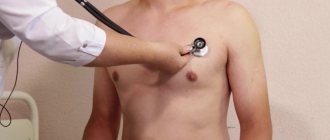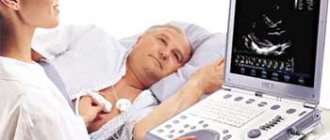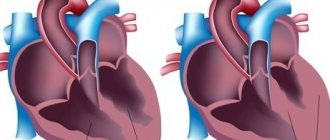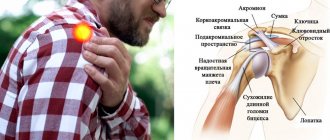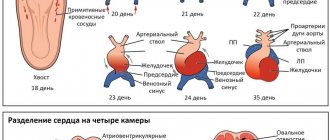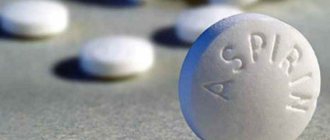The normal weight of the human heart ranges from 250 g in women and 350 g in men. At the same time, for a number of reasons, the main muscle of the body, which ensures its vital functions, can increase in size and exceed half a kilogram. In this case, a pathological situation develops - cardiomegaly, which is otherwise called “bull heart”.
A person has a big heart - this phrase does not always have a figurative meaning and means that he is the life of the party and a disinterested person who wants to help everyone. Sometimes a person has a big heart in the truest sense of the word. This happens at those moments when the heart muscle noticeably increases in size. Moreover, the pathology can be either congenital or acquired. In the first case, it is found more often in children, in the second - in adults.
Article on the topic A year in two. What ages the heart and how to rejuvenate the heart muscle?
Among the main complications that can develop against the background of this pathology are stroke and heart attack as a consequence of circulatory disorders in the heart muscle. Therefore, the situation cannot be ignored. And if there are signs of a pathological condition of the heart muscle, you should not ignore them.
An expert from the National Health League, MD, cardiologist, professor Mehman Mamedov told AiF.ru about what a “bull’s heart” is, how the problem is diagnosed and what needs to be done about it .
What is the essence of the problem
Bull heart syndrome is another name for cardiomegaly. According to the definition, the disease is characterized by an enlargement of all four or one chamber of the heart, as a result of which the main muscle is not able to perform a pumping function and maintain the central hemodynamics of the body. The heart becomes flabby and exhausted due to illness, and muscle fibers do not stretch because there is not enough strength to function normally.
An increase in heart size is a natural process in some people, particularly in athletes or those who frequently engage in physical labor.
In some cases, the disease occurs without obvious clinical manifestations. This most often occurs in the initial stages of the disease.
In the classic version, the disease clinically manifests itself in the form of rhythm disturbances (arrhythmia), or frequent shortness of breath, swelling and pain in the heart area. These signs can also appear in other diseases of the heart muscle. Therefore, you should not delay visiting a specialist in the field of cardiology, because symptoms of an enlarged heart can usually be identified only with the help of a certain medical examination.
Sincere confession. How to preserve your heart during an epidemic? More details
Symptoms of heart failure
The symptoms are associated with the inability of the heart to provide adequate blood circulation and the development against this background of congestion in the pulmonary and systemic circulation (in the vessels of the lungs and the vessels of other organs and systems). Stagnation of blood in the lungs interferes with its normal saturation with oxygen and is manifested by shortness of breath. Edema - stagnation in the systemic circulation disrupts the functioning of almost all organs. Patients feel:
- increased fatigue;
- shortness of breath;
- swelling of the legs and feet;
- pain or discomfort in the abdominal cavity due to liver enlargement.
Symptoms of heart failure develop gradually and can sometimes go unnoticed for a long time, so it is necessary to undergo regular medical examinations. At the cardiology center of the Federal Medical and Clinical Center of the Federal Medical and Biological Agency, you can undergo a comprehensive heart examination in order to promptly recognize this syndrome and the diseases that accompany it.
Why is it developing?
There are several factors that may cause the disease:
- hypertension;
- kidney disease;
- coronary heart disease (angina pectoris);
- viruses or infections that affect the heart;
- drug or alcohol abuse;
- genetic factors, since the symptom sometimes occurs in newborns or fetal children;
- development of a heart valve with abnormalities;
- consequences of pregnancy and childbirth.
Article on the topic
Don't give in to pressure. How to protect yourself from hypertension
Therefore, those who are at risk for such triggers should undergo regular examinations with a cardiologist to identify the problem in a timely manner. Any disease detected as early as possible is easier to correct.
Treatment for an Enlarged Heart
When this symptom is detected, patients wonder what to do if the heart is enlarged. Treatment should begin only after a complete examination and clarification of the causes. If necessary, bronchodilators, antihypertensives, and diuretics are prescribed. In some cases, a combination of these agents is necessary. Regardless of the cause, it is important to take medications to suppress heart failure. These include the drugs “Coronal”, “Propronalol”, “Captopril”, etc. In case of severe heart defects, surgical treatment is necessary. It is also prescribed for persistent ischemia and acute circulatory failure.
Diagnostic nuances
Bull heart syndrome is determined using complex diagnostics. It is the combination of several methods and techniques that allows for maximum assessment of the appearance, volume, and function of the heart. The list of studies to make such a diagnosis includes:
- blood analysis;
- chest x-ray;
- electrocardiogram;
- echocardiography;
- CT scan;
- sometimes - a biopsy of the inner surface of the heart ventricles.
All necessary studies are determined by the observing cardiologist. It is based on the severity of symptoms and the person’s condition.
A quieter pulse means you live longer. What should it be like normally? More details
How to diagnose cardiomegaly?
Anamnesis is not sufficient to identify cardiomegaly. To do this, it is necessary to palpate and percussion the organ. By tapping the heart, it becomes clear to the doctor whether its size is within the normal range or beyond its limits. In addition, an X-ray examination of the chest is performed. With cardiomegaly, the outline of the organ in the images is enlarged. To determine in which departments hypertrophy is observed, an ECG is performed. Thanks to this study, it is possible to learn about the cause of the disease (ischemia, lung pathology). EchoCG (ultrasound of the heart) is considered the most accurate for diagnosis. It allows you to determine the thickness of the myocardium in each chamber, the size of the cavities, and the presence of dilatation.
Pathology therapy
Naturally, many are concerned about the treatment of this problem. And it must also be comprehensive.
First of all, it is necessary to determine the cause of cardiomegaly, that is, to establish the underlying disease. If a person has this pathology, basic therapy is carried out. For example, coronary heart disease or hypertension is corrected.
At the first stage, drug therapy is used to treat cardiomegaly. It includes the prescription of diuretics to remove excess fluid from the body, antithrombotic drugs to reduce the risk of developing a blood clot, and beta blockers to slow the rhythm and reduce the load on the heart.
Article on the topic
No interruptions! How are cardiac arrhythmias treated?
In some cases, surgical interventions are used to restore the damaged valve and improve the performance of blood vessels.
A special pump is also implanted to help the heart work. In some cases, devices are used to regulate the heartbeat: with an enlarged heart, a pacemaker is used to coordinate the contractions of the heart muscle.
Myocarditis - symptoms and treatment
Viral infection plays a key role in the development of active myocarditis.
Phases of myocarditis development:
- Penetration of cardiotropic viruses (Coxsackie, mumps, parvovirus B19, adenovirus, etc.) or other infectious agents into the myocardium. Viruses enter cardiomyocytes, the muscle cells of the heart, multiply and cause their death. As a result of the direct action of viruses, the immune system is activated. The first phase of the disease, with an adequate immune response, ends with victory over the viruses or transition to the second phase.
- Autoimmune reactions occur, cardiomyocytes are destroyed under the influence of immune cells.
- Remodeling (modification) of the myocardium occurs—structural changes in the heart muscle [8].
Depending on the characteristics of the body’s defense mechanisms and the characteristics of the pathogen, one or another phase of the disease may predominate.
Normal immune reactivity helps eliminate the virus and allows the damaged myocardium to heal. However, immune disorders can lead to an imbalance: the body either fails to eliminate the virus, or favorable conditions are created for the cells of the immune system to remain in the heart muscle for a long time. Cells of the immune system secrete cytokine proteins that destroy cardiomyocytes.
In the mechanism of development of viral myocarditis, key factors are identified: the direct damaging effect of viruses, which leads to acute and chronic autoimmune reactions, and subsequent cardiac remodeling.
It has been established that remodeling of the heart muscle is the main link in the pathogenesis of the development of heart failure in myocarditis. In this process, the left ventricle is first affected, then the right parts of the heart are involved. Changes in cardiac geometry occur in the initial stages of myocarditis and progress with chronic inflammation [2].
In severe cases of the disease, the myocardium is damaged as a result of apoptosis of cardiomyocytes - programmed cell death. The more cardiomyocytes that show signs of apoptosis, the higher the risk of developing fatal heart failure in acute myocarditis [6].
Circulatory disorders with viral myocarditis go through three phases:
The first phase is hyperdynamic. Develops within 1-3 days after infection. During this phase, myocardial contractility increases, the volume of blood that the heart pumps per minute (minute volume) increases, as the activity of the sympathetic division of the autonomic nervous system increases. Also in this phase, diastolic dysfunction of the heart muscle develops - a violation of myocardial relaxation. There is slight damage to cardiomyocytes as a result of exposure to viruses and mediators of the immune system. There are no pronounced pathological changes in cardiac cells yet.
The second phase is depressive. Occurs between 4 and 7 days after infection. During this phase, a decrease in contractility, cardiac output, and impaired myocardial relaxation progresses. On the 5th day, dilatation (expansion) of the left ventricle develops. On the 7th day, cardiogenic shock and severe manifestations of venous stagnation may occur. In this phase, the virus continues to damage cardiomyocytes, and active damage to cardiomyocytes by cytokines is also observed. Edema develops, the myocardium becomes saturated with inflammatory cells, which leads to an increase in diastolic dysfunction of the left ventricle (impaired relaxation).
The third phase is recovery. If the course is favorable, recovery begins between 9 and 14 days. Intercellular edema and inflammation are reduced, which leads to a partial restoration of myocardial contractility and the compliance of the left ventricular cavity to stretching [1].
Preventive actions
As with any other disease, it is better to try to prevent it than to treat it later. And here the issue of preventing “bull’s heart” is important.
When an enlarged heart occurs, the consequences can manifest themselves in different ways, so with the least risks you should pay attention to your health. Ideally, you should adhere to the principles of a healthy lifestyle and eliminate bad habits such as alcohol and smoking. A person who does not want to face the consequences of an enlarged heart should constantly monitor blood pressure, consume less salt, engage in suitable physical activity, and lose excess weight. The recommendations are simple, but they will help you keep yourself in good shape.
Cardiomegaly - what is it?
Normally, the size of the heart is individual for everyone. They depend on the person’s build, gender, age. It is believed that the size of the organ is approximately equal to the size of a palm clenched into a fist. Nevertheless, there are limits that separate normal from pathological. An enlarged heart is called cardiomegaly. It can be detected both during a physical examination and through instrumental diagnostics. In most cases, the ventricle of the heart is enlarged, predominantly the left one. Less commonly, cardiomegaly occurs on the right side. Enlargement of the organ appears due to hypertrophy of the muscle layer, as well as due to stretching of the myocardium (dilatation). This phenomenon rarely occurs in a short time. Typically, cardiomegaly is preceded by a long-term chronic disease.
Auxiliary products for strengthening the heart muscle
Exercise alone will not be enough to maintain heart muscle health. It is important to provide the body with vitamins and minerals. You can use pharmaceutical drugs or use traditional medicine.
Among medications, Panangin, which contains potassium and magnesium, supports the heart muscle. Its purpose is to improve metabolic processes, prevent premature aging of the myocardium, the development of atherosclerosis, high blood pressure and arrhythmia.
A diet aimed at heart health should include: spinach, lentils, oatmeal, flaxseed oil, bananas, pomegranates, dried fruits, nuts, fish oil.
At home, you can prepare a healing mixture of dried apricots, figs, honey, raisins, walnuts and lemon with peel. Take 250 g of each ingredient, chop and mix. Store in the refrigerator, consume one tablespoon three times a day.
An auxiliary remedy can be an infusion of lemon balm, birch leaves, St. John's wort (10 g of each herb) and fireweed (30 g). Pour one tablespoon of the mixture into 300 ml of boiling water, leave and take 200 ml three times a day.
